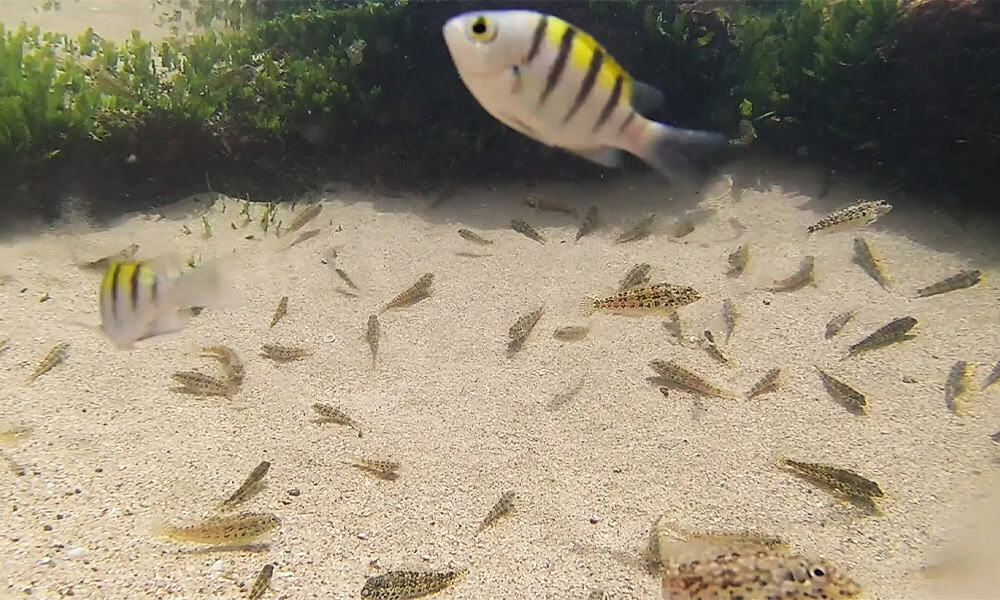My two sons couldn’t be more different. They look completely different. They act completely differently. They eat different foods. They have different interests. This trend continues when it comes to family days at the beach. The big one likes nothing more than to swim out amongst the waves. He prefers that I’m out there with him, throwing him around and letting him stand on my shoulders, but he’s also content to splash around by himself and loves to get smashed by big waves.
The little one won’t let a wave higher than four inches touch his skinny, little body. He’s more of a sand man, digging holes and throwing the sand up in the air so the wind blows it in my face. The one place on the beach where he will swim is the tidepools.
Our local beach consists of a huge expanse of sand with a crocodile-filled estuary on one side and a large rocky outcropping on the other. Our regular routine is for my wife and I to set up camp under the shade of some palm trees, the older boy immediately shoots out into the water, and the younger one starts to repeat, ‘Dad, can we walk to the rocks?’ approximately one million times.
I’ve learned not to fight the request for two reasons. First, he’ll repeat the question until you feel your sanity to begin to slip away. Second, the rocks contain tidepools that are full of wonderful creatures that delight us both.
Once we arrive at the rocks, he yells ‘Crab!’ every few minutes and swims in the pools with sandy bottoms while I climb on the rocky formations that house small pools that are full of life. Each pool has its own biological and non-biological setup, each acting like a little fully contained world.
Some are mostly rocks and sand, while others host bright green vegetation and little clumps of coral. The residents of each pool can only be seen with patience. You must sit motionless and wait for them to reemerge from the hiding places they retreated to upon your arrival. After a short time, all manners of tiny creatures begin to stir.
Until recently, I was content to sit, stare at the pools, and move on with my day, but the other day I was going through my camera equipment and came across the waterproof housing for a GoPro-style camera that I hadn’t used in forever, and it dawned on me that I could be filming the wildlife of the tidepools.
Between the spark of that idea and today, I’ve become completely addicted to filming tidepools. Now when the family hits the beach, it’s me grabbing the younger boy and saying, ‘Let’s go to the rock!’
I’m new to this pursuit, so I haven’t figured out all of the tricks yet. What I have discovered is that no matter how steady I feel as though I’m holding the camera underwater, when I view the video, it looks terrible because the camera is moving around too much. The trick is to place the camera underwater and walk away. The longer the camera is underwater, silently recording, the greater the chance of recording a larger number of species.
I’ve only been able to time the tides properly a few times, but I’ve found that the residents of each pool change every time I go, which makes sense because many of the species move around during high tide.
I’m just beginning to learn to identify the tiny creatures that I’m recording and most remain a mystery to me. Highlights so far include a species of mantis shrimp that I caught a glimpse of a few times that you can tell is intelligent simply by the way it navigates the tidepools, and a gooey creature called a sea hare that is a marine mollusk that looks like a slug with Shrek ears.
As of now, I’m unable to identify the majority of the creatures I’ve recorded, but I’m still happy to share them with you in the video below.
About the Author
Vincent Losasso, founder of Guanacaste Wildlife Monitoring, is a biologist who works with camera traps throughout Costa Rica






